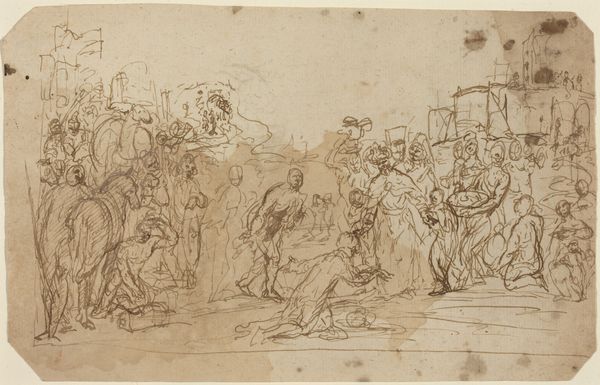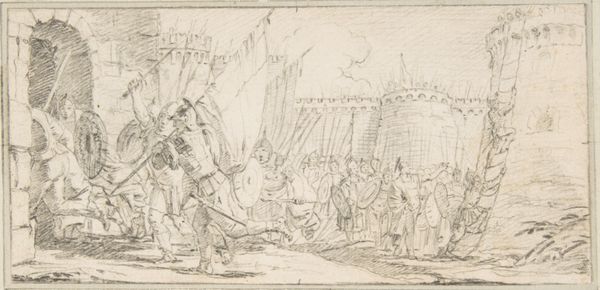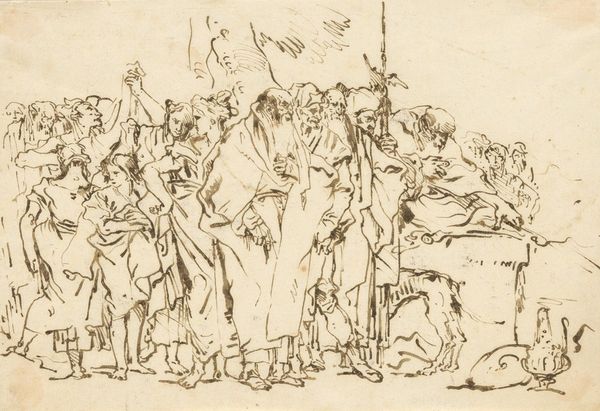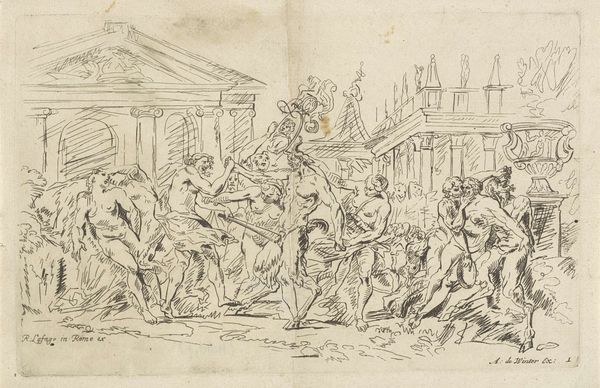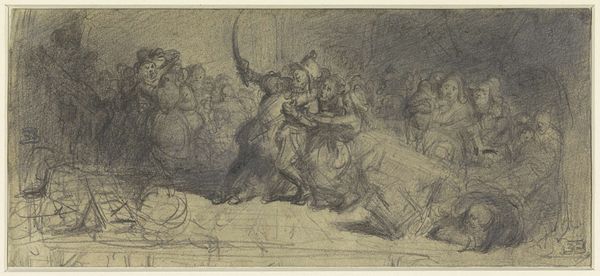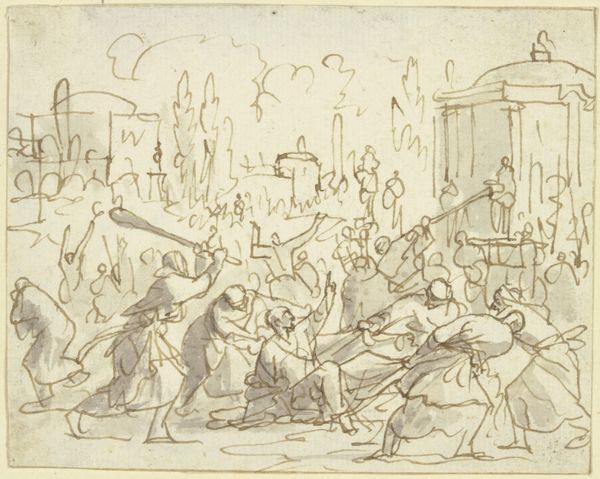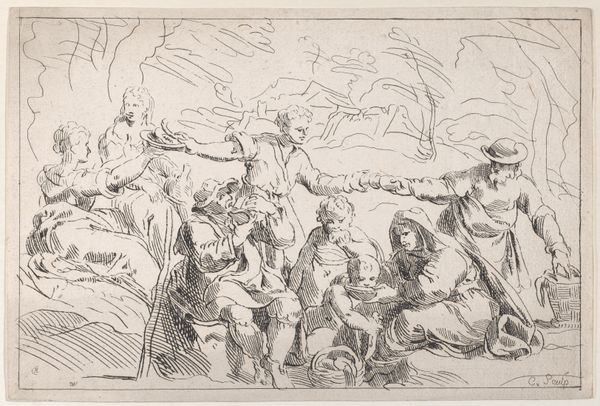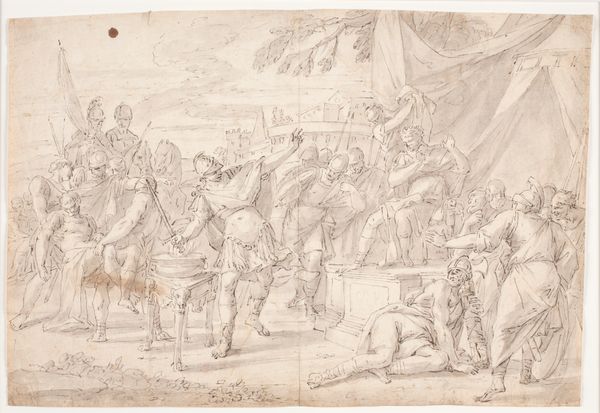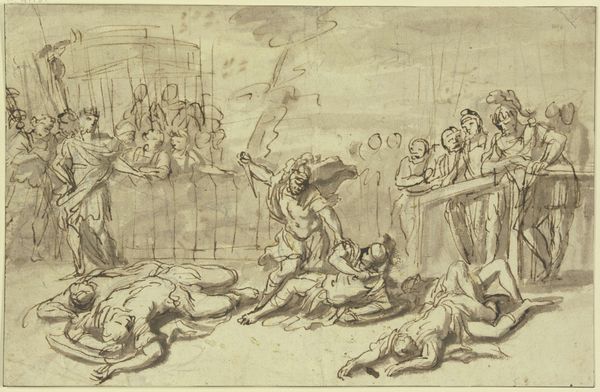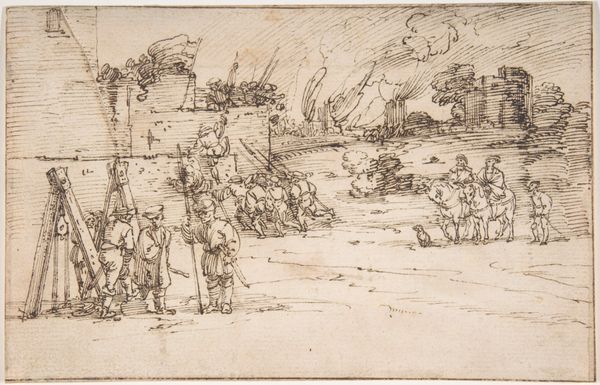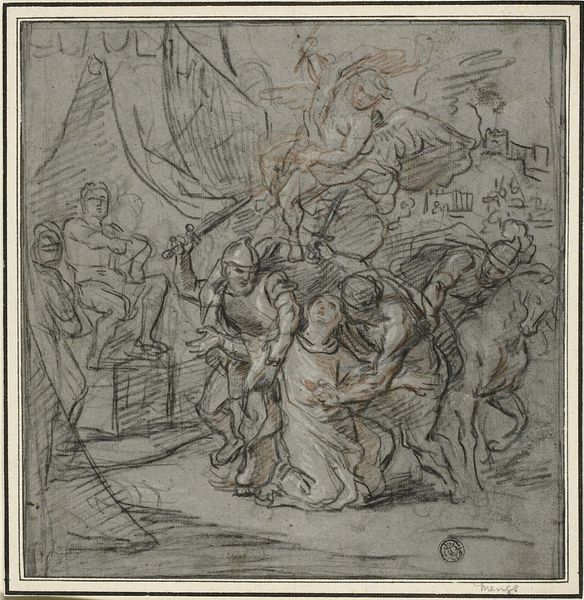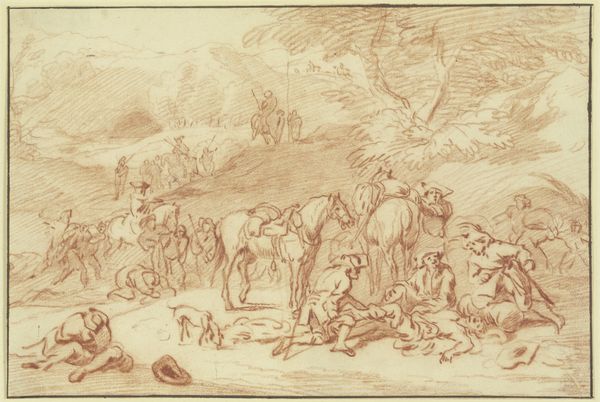
drawing, print, ink
#
drawing
#
neoclacissism
#
narrative-art
# print
#
figuration
#
ink
#
history-painting
Dimensions: 7 1/8 x 10 1/8 in. (18.1 x 25.7 cm)
Copyright: Public Domain
Editor: This ink drawing, titled "Soldiers Going into Battle," by Vincenzo Camuccini, created sometime between 1771 and 1844, depicts a scene brimming with tension. The limited color palette focuses your eye, particularly to the expressions of farewell in the center. What catches your eye about this piece? Curator: What interests me are the specific choices made in producing this image, choices deeply rooted in the social conditions of artistic creation. Notice the medium – ink on paper. It’s a relatively inexpensive material, suggestive of preliminary studies rather than finished high art, even though the narrative appears rather grand. Editor: That's true. It does feel very preliminary. So, are you saying the *materials* challenge our understanding of the subject matter? Curator: Precisely! Why choose a readily available, easily reproducible medium to depict a subject of war and presumably, national importance? Was this drawing perhaps intended for a wider audience, disseminated as prints perhaps, thus turning "high art" into something accessible to a broader segment of the population? The *process* then becomes intrinsically linked to a larger social function. Editor: Ah, I see. It reframes the question, moving beyond just the visual. Were prints a common way to distribute artwork and information during that time? Curator: Exactly. And consider the implications for Camuccini’s artistic labor. How does the ease and reproducibility of printmaking affect his status as an artist, compared to, say, a painter working with oils for a wealthy patron? Editor: It shifts the focus from individual genius to potentially a more collaborative and definitely, a more accessible mode of artmaking. That changes how I see the 'heroic' narrative! Curator: It compels us to consider the very means by which art is created, circulated, and consumed, doesn't it? Editor: Definitely! It highlights the connection between material, labor, and audience, making me think about art as more than just aesthetics. Thanks!
Comments
No comments
Be the first to comment and join the conversation on the ultimate creative platform.
